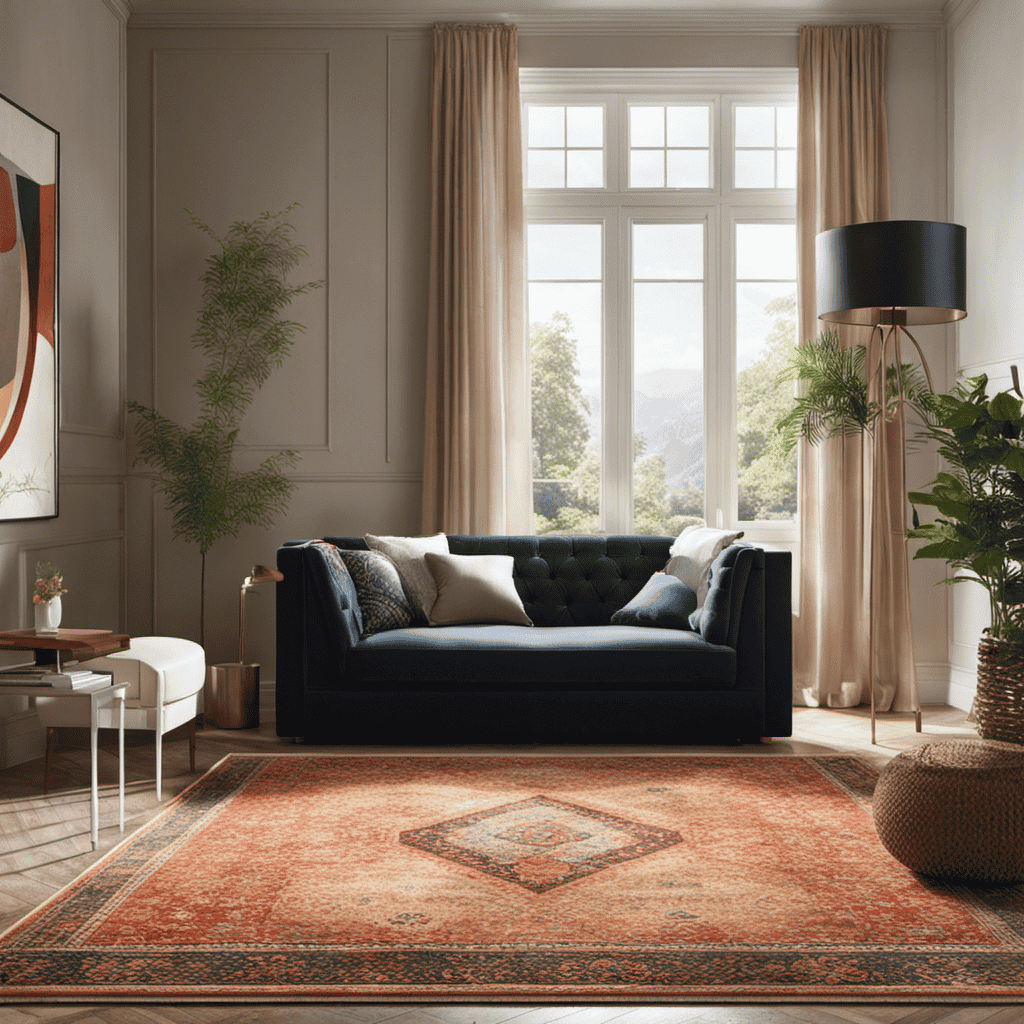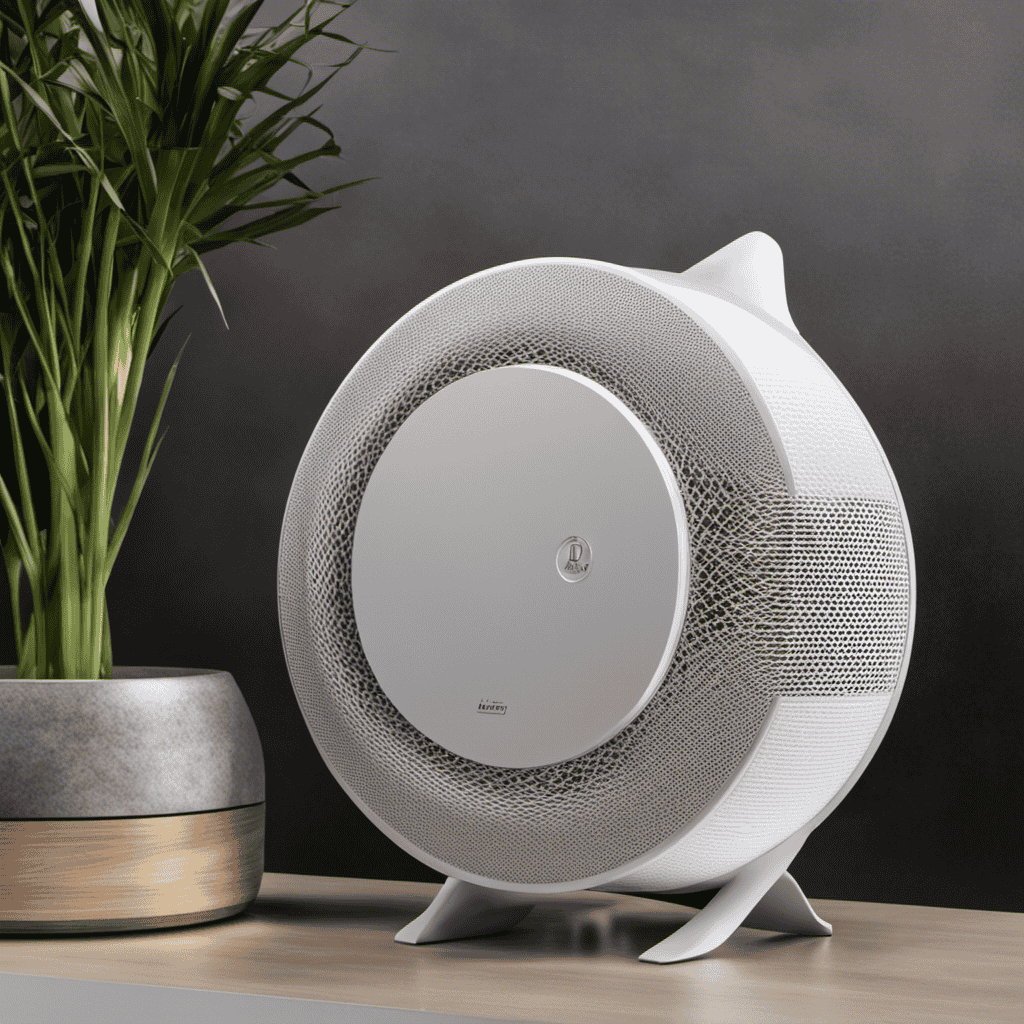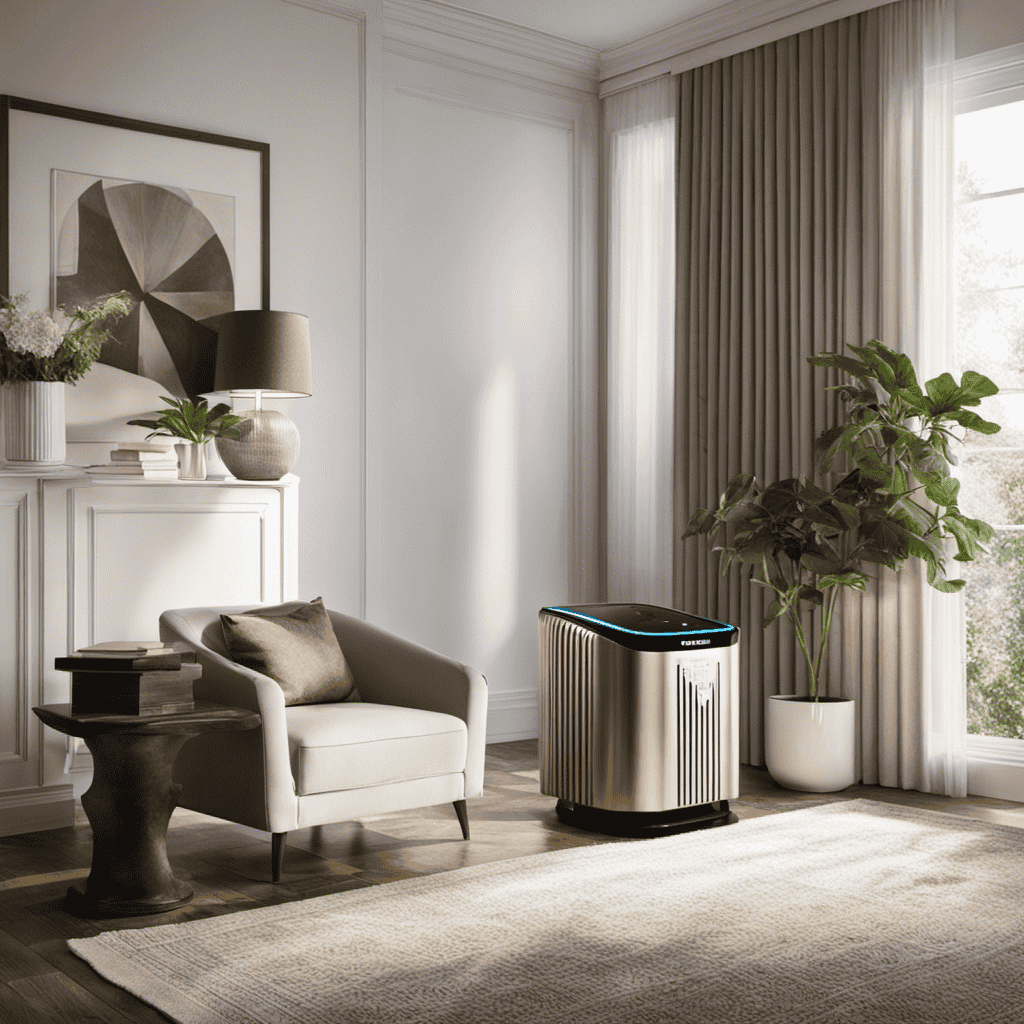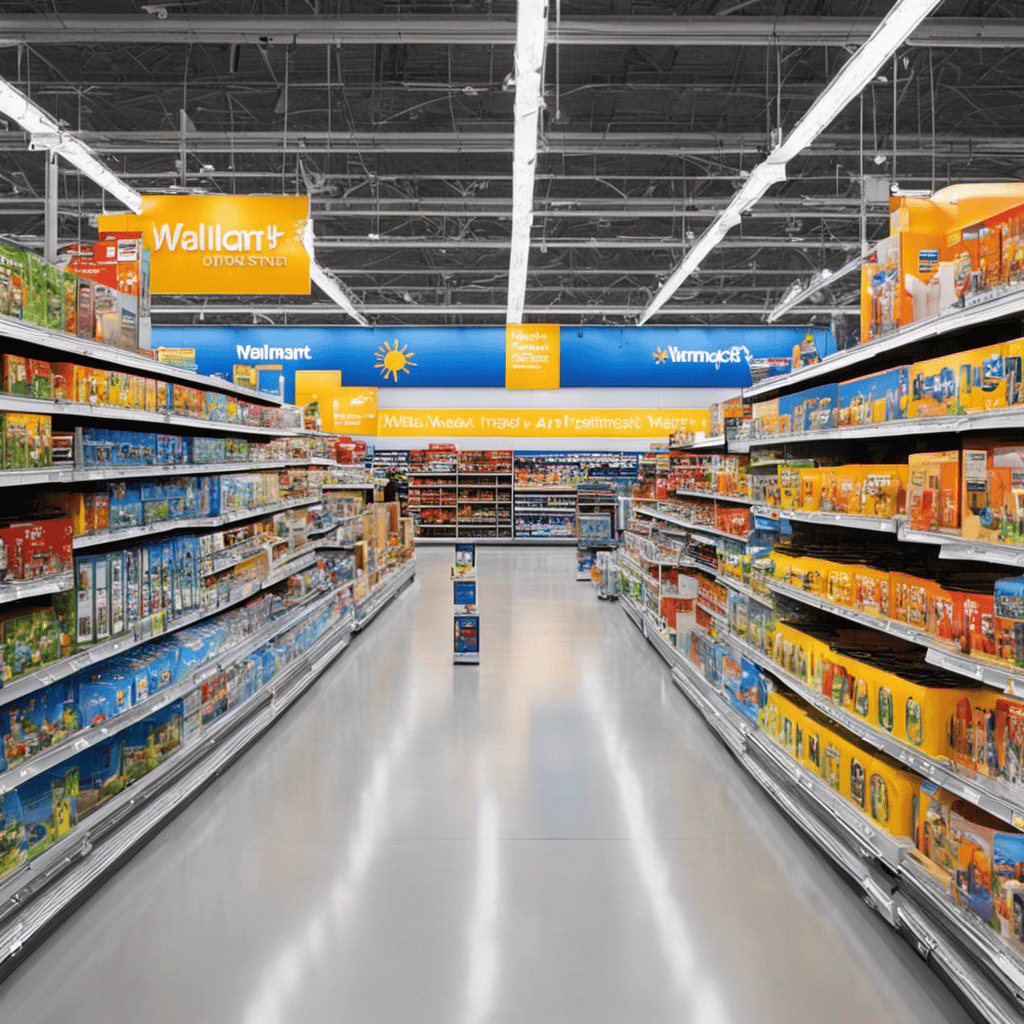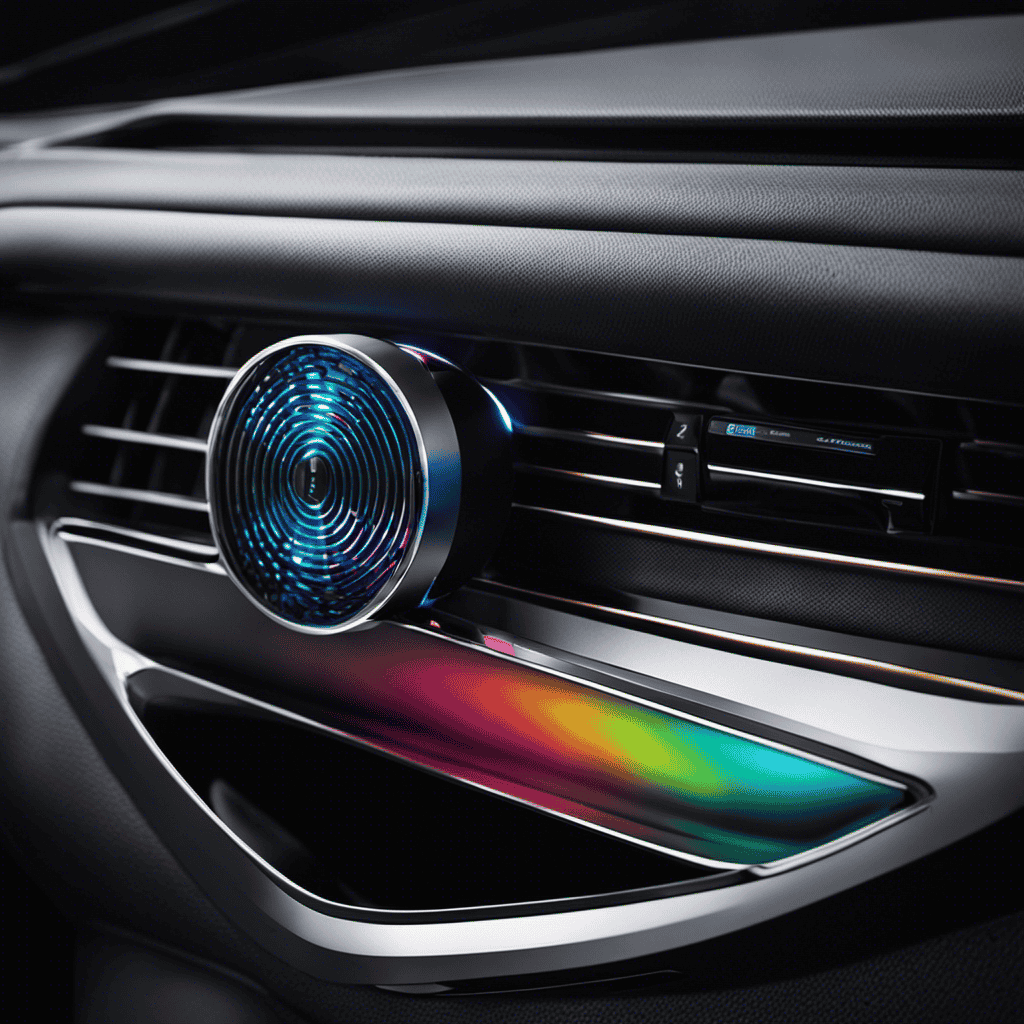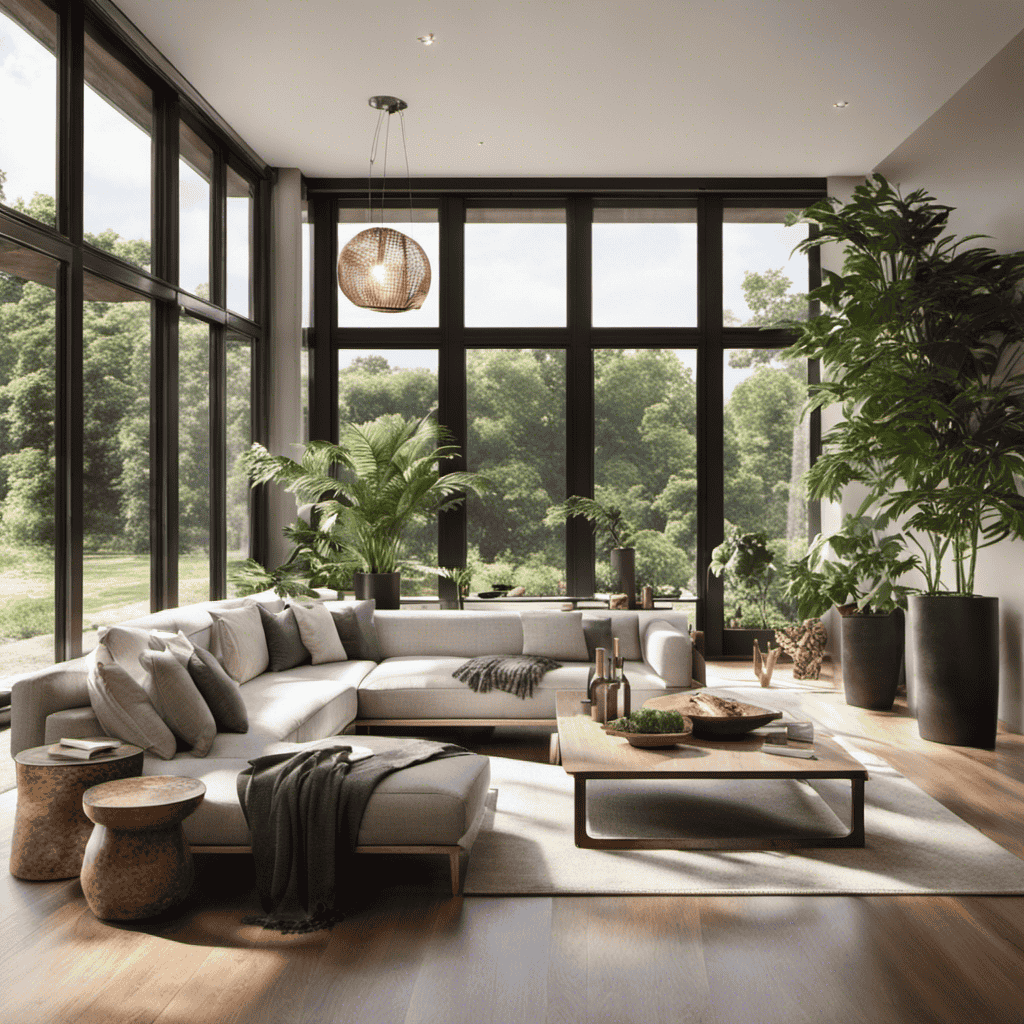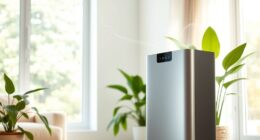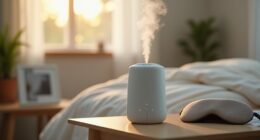Upon introducing the plush comfort of fresh carpeting into my living space, I found myself contemplating the interplay it might have with my beloved ozone air purifier. How do these two components interact when brought together?
In this article, I will delve into the fascinating interaction between ozone air purifiers and new carpet. Join me as we explore the risks, benefits, and misconceptions surrounding this intriguing pairing.
Together, we’ll uncover the truth and provide you with valuable insights for safely using ozone air purifiers with your new carpet.
Key Takeaways
- Ozone air purifiers can react with chemicals in new carpet, producing harmful by-products such as formaldehyde and volatile organic compounds (VOCs).
- Proper ventilation during and after carpet installation is crucial to minimize the release of harmful substances and promote better indoor air quality.
- Ozone air purifiers can accelerate the off-gassing process of new carpet, releasing potentially harmful chemicals into the air.
- Considering alternative air purifiers such as activated carbon filters or HEPA filters can be effective in removing VOCs without the potential risks of ozone.
The Impact of Ozone Air Purifiers on New Carpet
If you have an ozone air purifier and you get new carpet, it can potentially have an impact on the quality of air in your home. Understanding ozone reactions and the health concerns with ozone is crucial in evaluating this impact.
Ozone is a reactive gas composed of three oxygen atoms. When ozone reacts with certain chemicals found in new carpets, it can produce harmful by-products such as formaldehyde and volatile organic compounds (VOCs). These by-products can negatively affect indoor air quality and pose health risks, including respiratory irritation, allergies, and asthma symptoms.
It is important to be aware of this potential issue and take necessary precautions when using ozone air purifiers in conjunction with new carpet installations. Regular ventilation and monitoring of indoor air quality can help mitigate these concerns and ensure a healthy living environment.
Understanding the Interaction Between Ozone Air Purifiers and New Carpet
Understanding how ozone air purifiers and new carpet interact can help me make informed decisions about my indoor air quality. When it comes to ozone air purifier maintenance, it is important to consider the carpet installation process.
During the installation, a variety of chemicals and compounds can be released into the air, such as volatile organic compounds (VOCs) and formaldehyde. These airborne pollutants can negatively affect indoor air quality and potentially cause health issues.
Ozone air purifiers work by oxidizing these pollutants, reducing their presence in the air. However, it is crucial to properly maintain the ozone air purifier to ensure its effectiveness. Regularly cleaning the purifier’s filters and following manufacturer guidelines is essential.
Additionally, it is recommended to ventilate the area during and after carpet installation to minimize the release of harmful substances and promote better indoor air quality.
Potential Risks of Using Ozone Air Purifiers With New Carpet
The potential risks of using ozone air purifiers with new carpet should be carefully considered before making a decision. Ozone air purifiers have the ability to remove odors and pollutants from the air, but they also produce ozone as a byproduct. When ozone reacts with certain chemicals found in new carpet, it can create harmful byproducts that can negatively impact indoor air quality and potentially pose health risks.
To mitigate these risks, proper maintenance is crucial. Here are some key points to consider:
-
Potential health risks:
-
Ozone can irritate the respiratory system and worsen existing respiratory conditions.
-
Ozone can react with chemicals in new carpet and produce formaldehyde, a known carcinogen.
-
Proper maintenance:
-
Ensure proper ventilation in the area where the ozone air purifier is being used.
-
Regularly clean and vacuum the carpet to minimize the release of chemicals.
How Ozone Air Purifiers Affect the Off-Gassing Process of New Carpet
Using an ozone air purifier can accelerate the off-gassing process of new carpet, releasing potentially harmful chemicals into the air. When new carpet is installed, it goes through a carpet installation process that involves the use of adhesives and other chemicals. These chemicals can emit volatile organic compounds (VOCs) into the air, which may contribute to various health concerns such as respiratory irritation, headaches, and allergic reactions.
Ozone air purifiers, when used in close proximity to new carpet, can speed up the release of these VOCs by breaking down the chemical bonds. This can result in a higher concentration of harmful chemicals in the surrounding air. Therefore, it is important to understand the potential risks and take necessary precautions when using ozone air purifiers with new carpet.
Tips for Safely Using Ozone Air Purifiers With New Carpet
When it comes to the off-gassing process of new carpet, there are potential dangers that need to be considered. One of these dangers is the release of harmful chemicals into the air, which can lead to health issues.
In order to address this, many people turn to ozone air purifiers for their effectiveness in reducing odors and pollutants. However, it is important to understand the safe levels of ozone exposure to ensure that these purifiers are used correctly and do not pose any additional risks.
Carpet Off-Gassing Dangers
If you have an ozone air purifier, be aware of the dangers of carpet off-gassing when you get new carpet. Carpet off-gassing refers to the release of volatile organic compounds (VOCs) from new carpets, which can have negative effects on indoor air quality and human health.
Here are the potential effects and health risks associated with carpet off-gassing:
-
Effects of Carpet Off-Gassing:
-
Release of VOCs into the indoor air.
-
Strong odor from the new carpet.
-
Health Risks:
-
Irritation of the respiratory system, leading to coughing, wheezing, and difficulty breathing.
-
Allergic reactions, such as skin rashes and watery eyes.
-
Headaches and dizziness.
-
Long-term exposure to VOCs may contribute to the development of respiratory diseases and other health problems.
It is important to properly ventilate the area when installing new carpets and consider the potential risks of carpet off-gassing when using an ozone air purifier.
Ozone Purifier Effectiveness
The effectiveness of an ozone purifier should be considered when addressing carpet off-gassing. Ozone purifiers have been extensively researched for their ability to remove volatile organic compounds (VOCs) from indoor air. These VOCs are often emitted by new carpets and can cause health problems such as respiratory issues and headaches.
Studies have shown that ozone purifiers can effectively reduce the levels of VOCs in the air, improving indoor air quality. However, it is important to note that ozone itself can be harmful to human health when present at high levels. Therefore, it is crucial to use ozone purifiers in a controlled manner and follow manufacturer guidelines.
As an alternative, other air purifiers such as activated carbon filters or HEPA filters can also be effective in removing VOCs without the potential risks associated with ozone.
Safe Ozone Exposure Levels?
In my previous discussion on the effectiveness of ozone purifiers, I mentioned that they can produce ozone as a byproduct. Now, let’s delve into the topic of safe ozone exposure levels and the associated health risks.
It is important to note that ozone, at high concentrations, can be harmful to human health. However, at lower levels, it can be beneficial for air purification purposes. Here are some key points to consider:
-
Safe Ozone Exposure Levels: The Environmental Protection Agency (EPA) has set a standard for safe ozone exposure levels, known as the National Ambient Air Quality Standard (NAAQS). The current NAAQS for ozone is 0.070 parts per million (ppm) averaged over an 8-hour period.
-
Health Risks: Prolonged exposure to ozone at high concentrations can cause respiratory issues, such as chest pain, coughing, and throat irritation. Individuals with pre-existing respiratory conditions, such as asthma or chronic obstructive pulmonary disease, are more susceptible to the health risks associated with ozone exposure.
The Benefits of Using Ozone Air Purifiers in Conjunction With New Carpet
Using ozone air purifiers in conjunction with new carpet can have significant benefits in improving indoor air quality and eliminating carpet odors.
Ozone air purifiers are effective in neutralizing and removing airborne pollutants, such as allergens, mold spores, and bacteria, thereby creating a healthier environment.
Additionally, these purifiers can help eliminate unpleasant odors commonly associated with new carpet, such as off-gassing chemicals, pet dander, and cigarette smoke residue.
Improved Indoor Air Quality
Once you have an ozone air purifier and get new carpet, you’ll notice a significant improvement in your indoor air quality. The combination of these two factors can have a positive impact on your respiratory health and help reduce allergens in your home. Here’s how:
-
Ozone air purifiers work by releasing ozone, a highly reactive molecule, into the air. Ozone reacts with pollutants, such as allergens, mold, and bacteria, breaking them down and neutralizing their harmful effects. This process helps to remove allergens from the air, reducing the risk of allergic reactions and improving respiratory health. Additionally, ozone air purifiers can help eliminate odors, leaving your indoor environment smelling fresh and clean.
-
New carpet, on the other hand, can contribute to improved indoor air quality by reducing the presence of dust and airborne particles. When compared to old carpet, new carpet has fewer trapped pollutants, making it easier to clean and maintain a healthier indoor environment. Additionally, new carpet is less likely to release volatile organic compounds (VOCs), which are potentially harmful chemicals that can affect indoor air quality.
Eliminating Carpet Odors
Eliminating carpet odors can be achieved through the combination of an ozone air purifier and new carpet, which work together to neutralize and remove unpleasant smells. The ozone air purifier releases ozone molecules into the air, which react with the odor-causing compounds in the carpet, breaking them down and eliminating the odor. Additionally, installing new carpet can help to reduce odors as it does not carry the accumulated dirt, dust, and bacteria that old carpet may have. The combination of the ozone air purifier and new carpet creates a powerful and effective solution for carpet odor removal. By utilizing these air purification techniques, you can ensure a fresh and clean environment in your home.
| Carpet Odor Removal | Air Purification Techniques |
|---|---|
| Ozone air purifier | Neutralizes odor-causing compounds |
| New carpet | Reduces accumulated dirt, dust, and bacteria |
| Provides a fresh and clean environment |
Common Misconceptions About Ozone Air Purifiers and New Carpet
Contrary to popular belief, ozone air purifiers do not completely eliminate the odor of new carpet. While ozone can help reduce certain odors, it is important to understand the common misconceptions surrounding the use of ozone air purifiers in this context.
Here are some potential risks and misconceptions to be aware of:
-
Ozone is not a miracle solution: Ozone air purifiers may be effective in neutralizing some odors, but they are not a foolproof solution for eliminating the strong smell of new carpet.
-
Health risks: Ozone can be harmful to human health, especially in high concentrations. Prolonged exposure to ozone can lead to respiratory issues and exacerbate existing conditions such as asthma.
-
Ineffectiveness against volatile organic compounds (VOCs): Ozone air purifiers are not effective in removing VOCs emitted by new carpets. VOCs can contribute to indoor air pollution and may cause health problems over time.
It is important to consider these factors before relying solely on ozone air purifiers to tackle the odor of new carpet.
What Are the Potential Risks of Using an Ozone Air Purifier with New Carpet?
When considering the potential risks of using an ozone air purifier with new carpet, it’s important to note that there are no ozone air purifier benefits in this case. Ozone can react with new carpet chemicals, leading to the production of harmful byproducts that can be detrimental to your health.
Frequently Asked Questions
Can I Use an Ozone Air Purifier With New Carpet Without Any Risks?
I can use an ozone air purifier with new carpet without any risks. However, it’s important to consider the carpet installation process and the effectiveness of ozone air purifiers on odors.
How Long Does the Off-Gassing Process of New Carpet Typically Last?
The duration of off-gassing from new carpet varies, but it typically lasts a few days to a few weeks. It is important to consider potential health risks associated with the release of volatile organic compounds during this process.
Are There Any Specific Precautions I Should Take When Using an Ozone Air Purifier With New Carpet?
Precautions should be taken when using an ozone air purifier with new carpet. Ozone can react with chemicals released during off-gassing, potentially creating harmful byproducts. It is important to ensure proper ventilation and monitor ozone levels for safety.
Can Ozone Air Purifiers Completely Eliminate the Smell of New Carpet?
Ozone air purifiers may help reduce the smell of new carpet, but they can’t completely eliminate it. Other solutions like proper ventilation or using activated charcoal may be safer and more effective in addressing the smell without potential health risks.
Do Ozone Air Purifiers Have Any Negative Effects on the Lifespan of New Carpet?
Ozone air purifiers may have negative effects on the lifespan of new carpet. The risks include accelerated wear and tear, fading, and damage to the carpet fibers. It is important to consider these factors before using an ozone air purifier with new carpet.
Conclusion
In conclusion, it’s important to be cautious when using ozone air purifiers with new carpet. While these purifiers can help eliminate odors and improve indoor air quality, they may also interact with the off-gassing process of new carpet, potentially releasing harmful chemicals into the air.
It is advisable to follow safety guidelines and use ozone air purifiers in a well-ventilated area. Remember, "An ounce of prevention is worth a pound of cure" when it comes to protecting your health and ensuring a safe environment.
